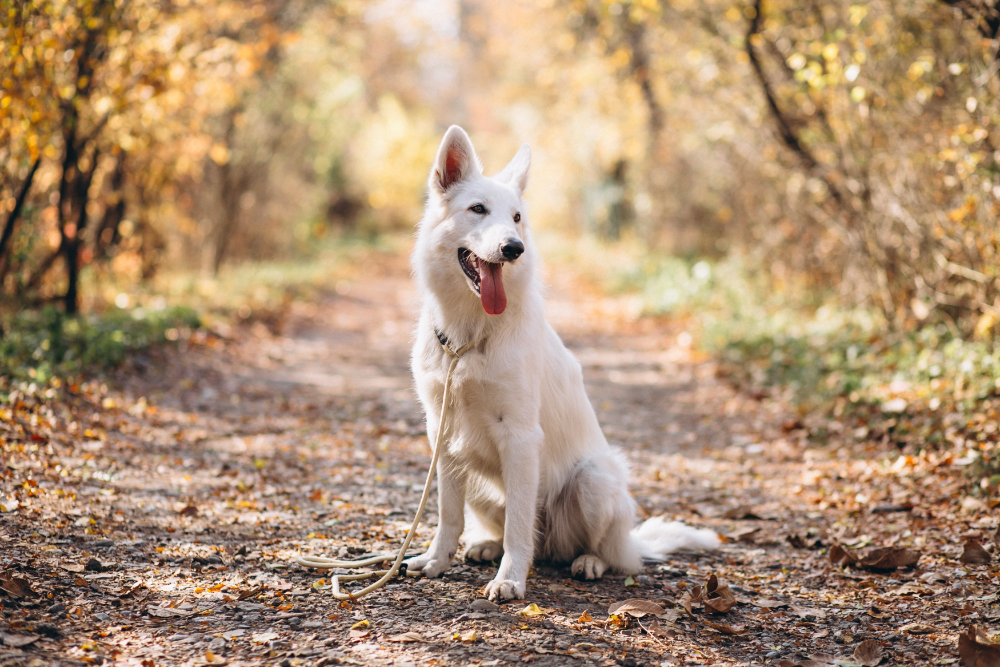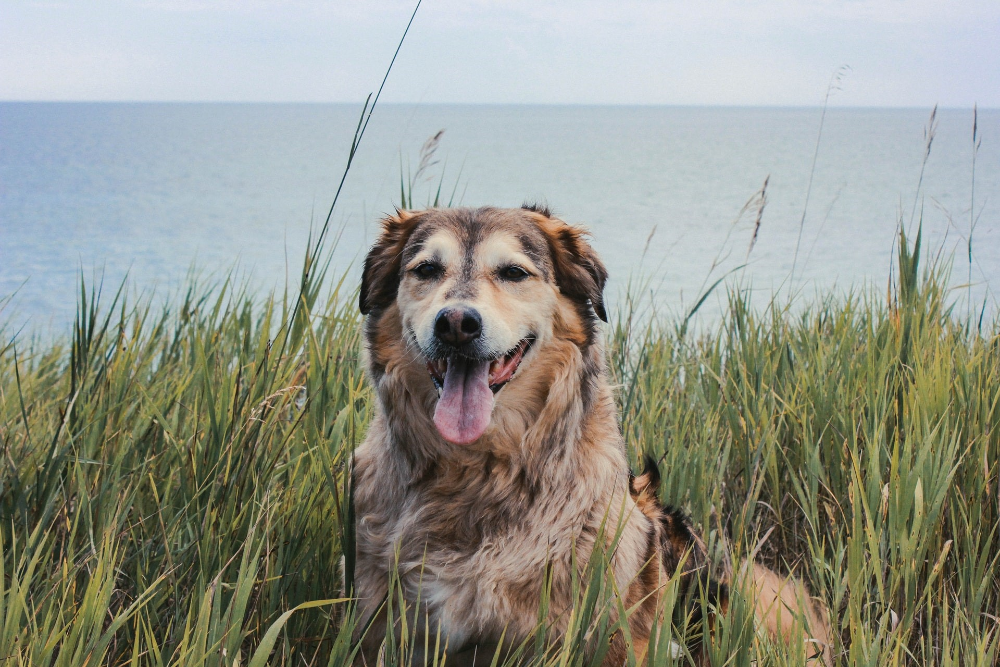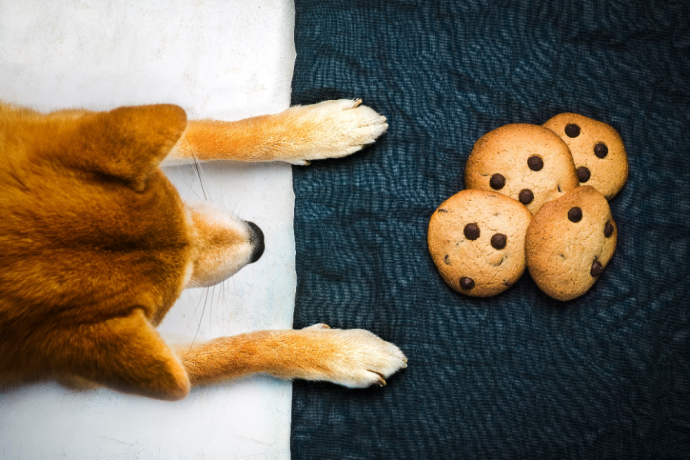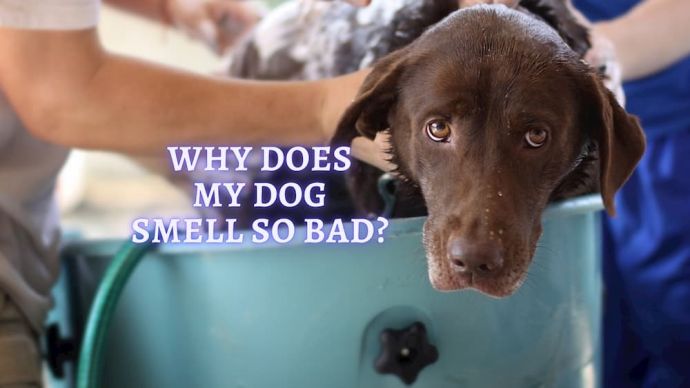Can a dog walk with a torn ACL? Vet Advice
Written by:
Author: Dr. Joanna De Klerk
Dr. Joanna de Klerk is a professional Clinical Veterinarian. Member of the Royal College of Veterinary Surgeons UK and a member of the South African Veterinary Association. Graduated with a Master of Science in Tropical Animal Medicine in 2018. Professional author, she has been writing in scientific journals, and also several book series. Joanna loves to enjoy time with her young daughter and family in her free time.
View all 10 articlesLearn about our editorial process and veterinary review board.
Viewed: 267
Updated on: 07/06/2021
Ever heard of a torn ACL? You might have done on the sports news with soccer players being booked off with the injury. But did you know your dog can suffer from this injury too? In humans, the term ACL is used for describing the ‘anterior cruciate ligament.’ However, in dogs, it’s more commonly known as the CCL or ‘cranial cruciate ligament.’ Cruciate ligament injuries in dogs are more common than you may realize and are frequent causes of hindlimb lameness.
Where is the Cruciate Ligament?
The stifle joint, also known as the knee joint, is in the upper half of the hind limb. It is a hinge joint that only flexes and extends in one direction. Holding the joint together are several fibrous ligaments, most importantly are the cranial and caudal cruciate ligaments. These are two ligaments that cross over in the middle of the joint and provide the majority of the stability for the joint.
The cranial cruciate ligament is the ligament most susceptible to injury, and trauma of it can often be debilitating. The level of damage can range from a mild strain to a complete tear, and the severity will often dictate the level of treatment needed. Inside the stifle joint, there is also a structure called the meniscus. Cruciate ligament injuries and meniscal injuries often go hand in hand; therefore, this should always be assessed and repaired if needed to provide the most positive outcome.
How does a dog injure his Cruciate Ligament?
There are several different ways that a cruciate ligament can become injured:
Acute injury
If you have a bouncy, energetic dog, he can easily turn on the spot and twist his stifle in the wrong direction, or stumble on uneven ground. These are common causes of sudden onset cruciate ligament injuries and are often the most severe.
Neutering
The risk of cranial cruciate ligament injury increases two to three times in neutered dogs, and if neutered before six months, it increases even further in males. This is because neutering weakens the cruciate ligament.
Confirmation
An abnormal conformation, such as disproportionately long or straight legs, excessive bending at the hocks, or outward or inward-turned paws, can lead to an abnormal distribution of forces throughout the leg. This, in turn, puts extra strain on the cruciate ligaments, potentially leading to weakness or sprains.
Bilateral weakness
The cruciate ligament can be fragile, and therefore if one side becomes injured, the extra weight shifting over to the other hand will usually cause the other side to weaken and become injured in the months following.
READ MORE: Outdoor Activities for Dogs
How do I find out if my dog has a Cruciate Ligament Injury?
Many different symptoms may indicate that your dog has a cruciate injury. Of course, not all cruciate injuries will have all the symptoms, nor does it mean that if your dog has one or more of the symptoms that he has a cruciate injury. However, they are indications for your veterinarian to run some diagnostic tests. The following symptoms are suggestive of a cruciate injury:
- Hind leg lameness
- Intermittent hopping or skipping with the hind leg
- The non-weight bearing of a hind leg
- Touching the tip of the toe to the ground when standing still
Your veterinarian can perform some simple diagnostic tests in the consulting room to determine whether he thinks the cruciate is injured. These will include:
- Lameness examination: Your veterinarian will watch your dog walk back and forth to ascertain which leg he has hurt.
- Palpation and manipulation: Your veterinarian will flex and extend all the joints to locate which is sore. He will also feel for heat and swelling, which indicate inflammation.
- Cranial drawer test: This test investigates if there is instability in the stifle joint. When holding the bones above and below the joint, it should be impossible to move them backward and forwards from each other. If they can slide past each other in this direction, then this is a positive sign that the cruciate ligament is injured.
- Tibial thrust test: When holding the bone above the stifle and placing an index finger on the point of the stifle to stabilize it, it should be impossible to flex the paw upwards very far. If the paw can move excessively, this indicates there is instability in the stifle.
If a clinical examination indicates that your dog may have a cruciate ligament injury, your veterinarian might do further imaging to confirm the diagnosis. This could be by two means:
- X-rays: This will check that no other part of the stifle is injured, such as a fracture, and will confirm that the joint is inflamed.
- Arthroscopy: This requires a camera to be placed directly into the joint to visualize the cruciate ligament and meniscus. This is the diagnostic gold standard; however, it is usually only performed in referral practice.
Do dogs need surgery for Cruciate Ligament Injuries?
Not all dogs need surgery to repair a cruciate ligament. Smaller dogs can often recover with conservative management alone, depending on the severity of the injury. Four different surgical techniques can be used to repair a cruciate ligament. There is not a ‘best’ technique, but rather the technique that the surgeon is most familiar with is often considered the best.
- Extracapsular suture: This surgery is when a suture (stitch) is placed around the outside of the joint to provide stability to the joint while it heals itself.
- TPLO: Tibial plateau leveling osteotomy surgery involves changing the angle of the top of the tibia (the bone and the bottom of the joint) by cutting it, repositioning it and placing a plate and screws to stabilize the new position.
- TTA: Tibial tuberosity advancement surgery is when the front of the tibia is cut and moved forward, then stabilized with a plate and screws.
- Meniscectomy: This is when key-hole surgery into the joint removes the damaged meniscus. This can be done in addition to the extracapsular suture surgery if needed.
Can a Cruciate Ligament Injury heal on its own?
If your dog is a small breed dog, and the injury is not a full rupture, cruciate injuries can heal on their own. However, this is not the most ideal treatment option, as it can later increase the chances of secondary osteoarthritis. Successful conservative management requires the following:
- Rest. And lots of it. Strict crate rest for four to six weeks is required to allow the cruciate to heal properly. Without this, every twist, turn and step will exacerbate the injury.
- Anti-inflammatories. Unless your dog has an underlying liver or kidney problem, or he is on other mediation, he should have anti-inflammatories to bring down the swelling and pain in the joint. These will be prescribed by your veterinarian.
- Physiotherapy. After several weeks of crate rest, gentle physiotherapy exercises can be introduced to build up the ligament’s strength and the supporting muscles in the hind leg. This can be performed by a qualified veterinary physiotherapist.
- Hydrotherapy. This is more than just swimming. Hydrotherapy is highly therapeutic. It builds up strength without putting a strain on the cruciate ligament and is a great mental break for your dog when staying a crate.
- Exercise regime. Once the crate rest is over, exercise should be introduced gradually and in a controlled manner. Initially, only walking on a lead should be allowed, to prevent twisting and turning, and the length of time should be built up from only a few minutes daily to a normal amount for two to three months.
What is the future for a dog with a Cruciate Ligament Injury?
Unfortunately, even when your dog has recovered from his cruciate ligament injury, he is not out of the woods. Re-injury is common, as most dogs look like they are better before the ligament is fully healed. It can take three to six months to regain all the original strength, and therefore exercising your dog should be taken with care.
As well as re-injuring the same cruciate ligament, it is not uncommon for the cruciate ligament in the other leg to also become injured. This is because most dogs with a cruciate weakness will be weak bilaterally. Also, the few who have had an acute injury without any underlying factors will have shifted their weight over to the other hind leg for a while, putting a strain on the other side. Therefore, great care should be taken to avoid situations that may lead to injury.
Finally, any instability of a joint is likely to lead to osteoarthritis in the future. This is a debilitating condition and cannot be cured; therefore, ensuring you do not rush your dog’s recovery will help prevent this from happening.
READ MORE: Indoor Activities For Dogs
Final thoughts
Cruciate ligament injury can be debilitating, both in the short-term and long-run. Therefore, if your dog has been unfortunate to suffer from this sort of injury, ensuring he receives prompt treatment will help him have the best outcome. Adding in joint supplements daily will help reduce the chances of osteoarthritis development, and being cautious of his joints in the future will be beneficial to prevent re-injury. In the end, your veterinarian will be able to provide you with all the essential information that you must know for your specific pet and their particular injury, as no two animals and their injuries are the same.
 Dog Veterinary Tips Dog Losing Hair Around the Eyes: Causes, Diagnosis and Treatment (Vet Advice)
Dog Veterinary Tips Dog Losing Hair Around the Eyes: Causes, Diagnosis and Treatment (Vet Advice) - 5707
- 0
 Dog Veterinary Tips Can Dogs Eat Mint? What Type of Mint Can Dogs Eat? Vet Advice
Dog Veterinary Tips Can Dogs Eat Mint? What Type of Mint Can Dogs Eat? Vet Advice - 1630
- 0
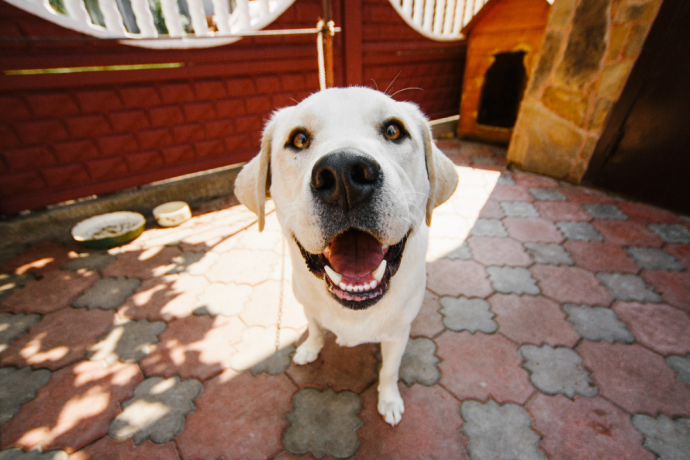 Dog Veterinary Tips My Dog’s nose is Dry and Cracked: Causes and Things to Help
Dog Veterinary Tips My Dog’s nose is Dry and Cracked: Causes and Things to Help - 327
- 0
 Dog Veterinary Tips Why is my Dog throwing up: Causes and Preventing (Veterinary Advice)
Dog Veterinary Tips Why is my Dog throwing up: Causes and Preventing (Veterinary Advice) - 23424
- 5
 Dog Care Why Is My Dog Bleeding From Its Butt? Causes and treatment of rectal bleeding in the dog
Dog Care Why Is My Dog Bleeding From Its Butt? Causes and treatment of rectal bleeding in the dog - 22076
- 0
 Dog Care My Dog Keeps Scratching His Mouth: Reasons Why Your Dog Scratching Face
Dog Care My Dog Keeps Scratching His Mouth: Reasons Why Your Dog Scratching Face - 17561
- 1









